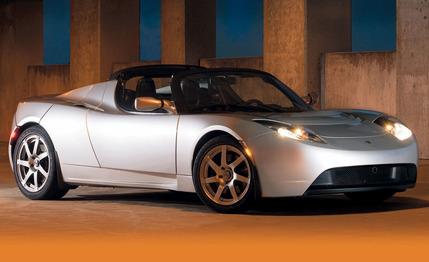 Road Test
Road Test
Nikola Tesla was a genius who, more than 100 years ago at the dawn of the electric age, invented alternating electrical current, the radio, and the AC motor, among other things, that are instrumental to our modern life. Now, in the 21st century, Tesla Motors is trying to reinvent the automobile, and we spent a day driving the company’s first product, the Tesla roadster.
Based on the Lotus Elise, the Tesla is a high-performance sports car motivated by a completely electric powertrain—meaning, an electric motor juiced by a battery. For those who believe such a powertrain is only suitable for overgrown golf carts—the various Th!nk and GEM products, for example—the Tesla is a revelation.
On a wet public road, with mediocre traction, we measured a 0-to-60-mph time of 4.4 seconds (shifting at 62 mph) and a quarter-mile of 13.3 seconds at 104 mph (shifting at 45 mph, which is what’s represented in our spec panel). Even more impressive is the instant acceleration at real-world speeds of 30 to 100 mph. Squeeze the throttle, and the Tesla surges forward with effortless ease.
Our top-gear acceleration measured 2.3 seconds for the 30-to-50- and 50-to-70-mph intervals. The Tesla’s 4.6-second total for the two tests bests that of a Mercedes-Benz CLK63 AMG Black Series, which was our 2007 champion in this measure of instant responsiveness.
This performance is not accompanied by the usual sound of an electric car, namely, the manic whine of a 120-volt sewing machine plugged into a 220 outlet. Instead, the wind whistle and the road and tire noises you’d expect in a Lotus dominate your aural landscape. It helps that the device that makes this performance possible sits between the electric motor and the cockpit.
We’re talking about the Tesla’s giant battery pack. It fills the space where the Elise’s mid-mounted, Toyota-sourced powertrain was once located. The Tesla’s powerful battery consists of 6831 lithium-ion cells arrayed as follows: 69 cells wired in parallel make up a brick; nine bricks in series form a sheet; and 11 sheets in series make up the complete battery.